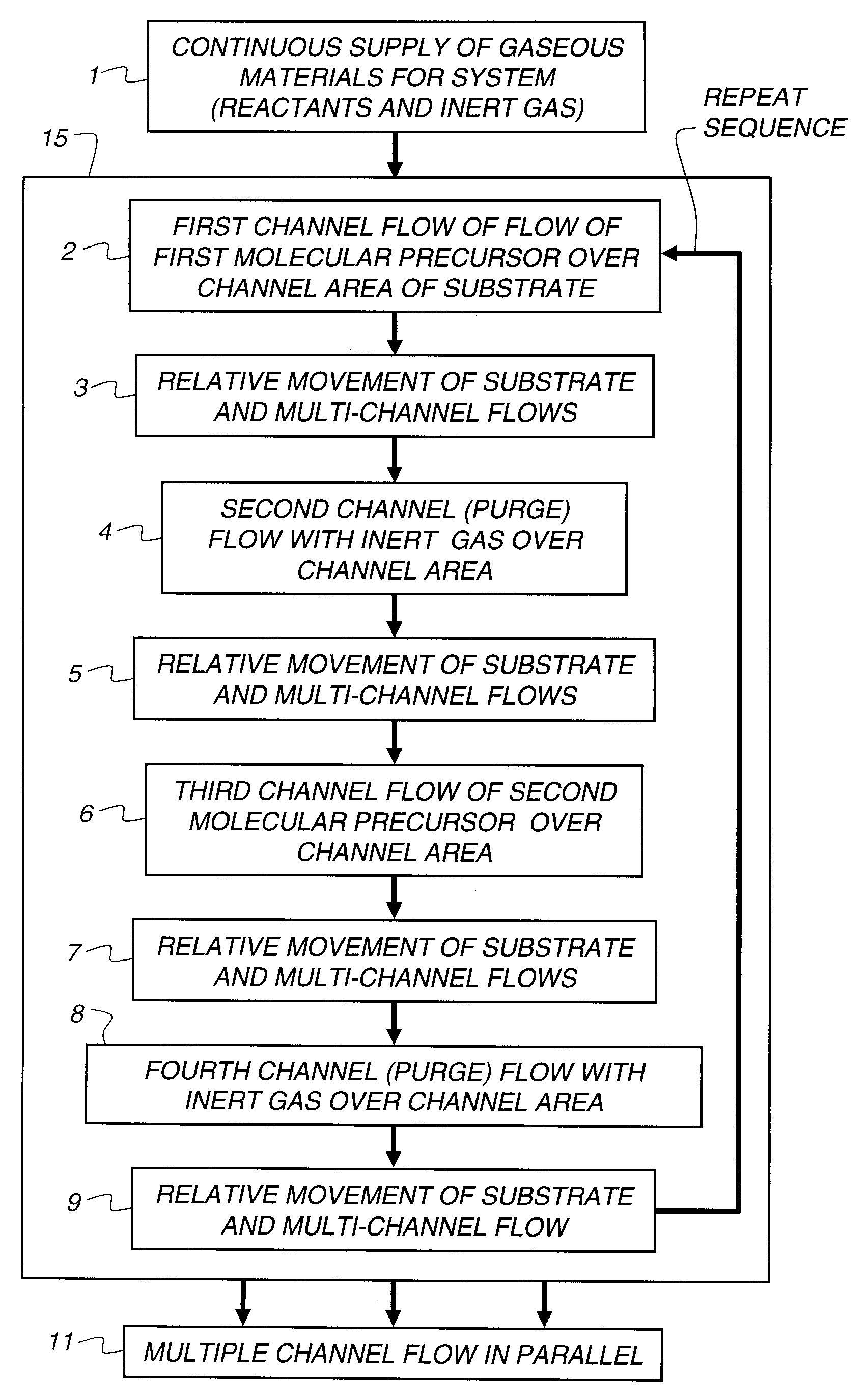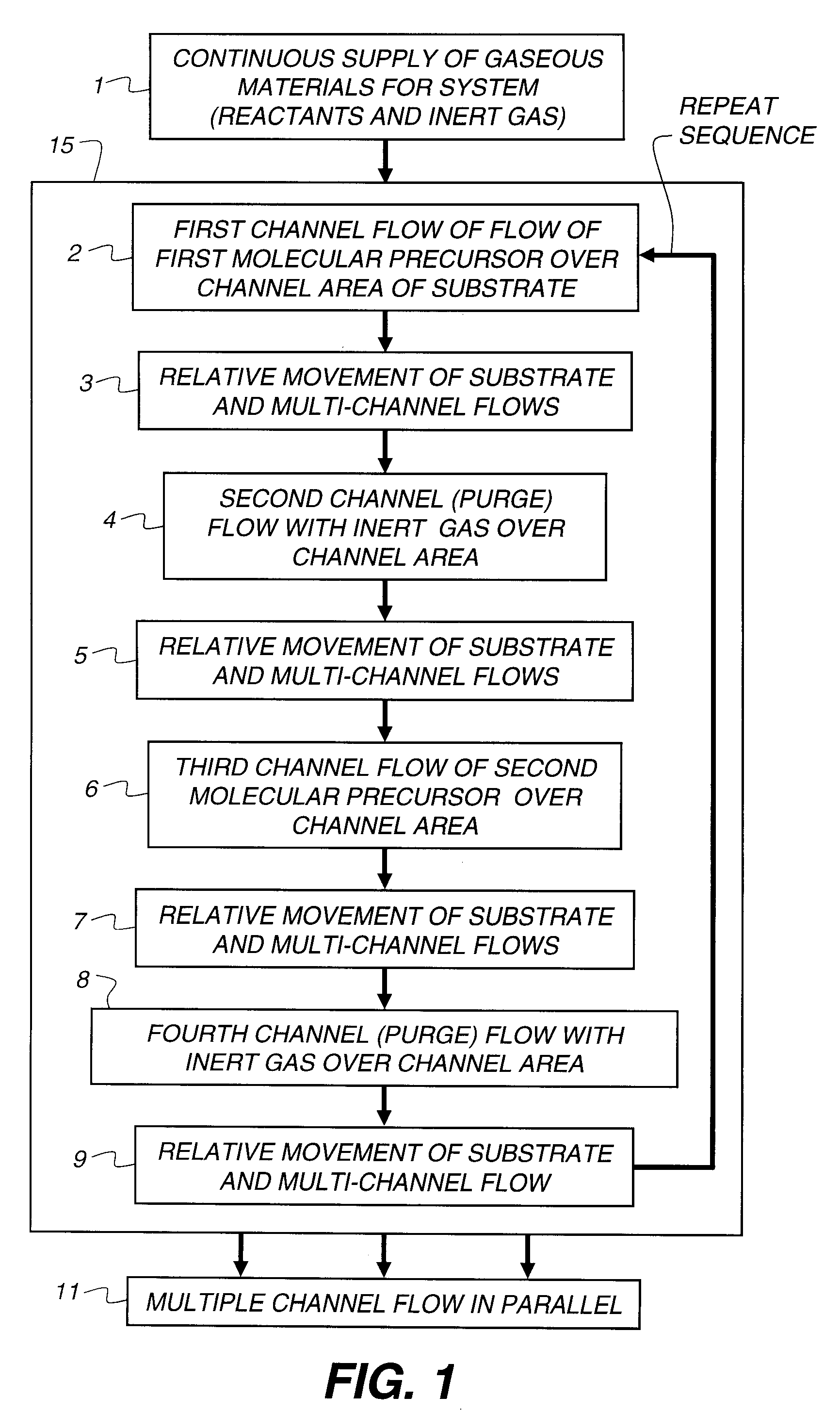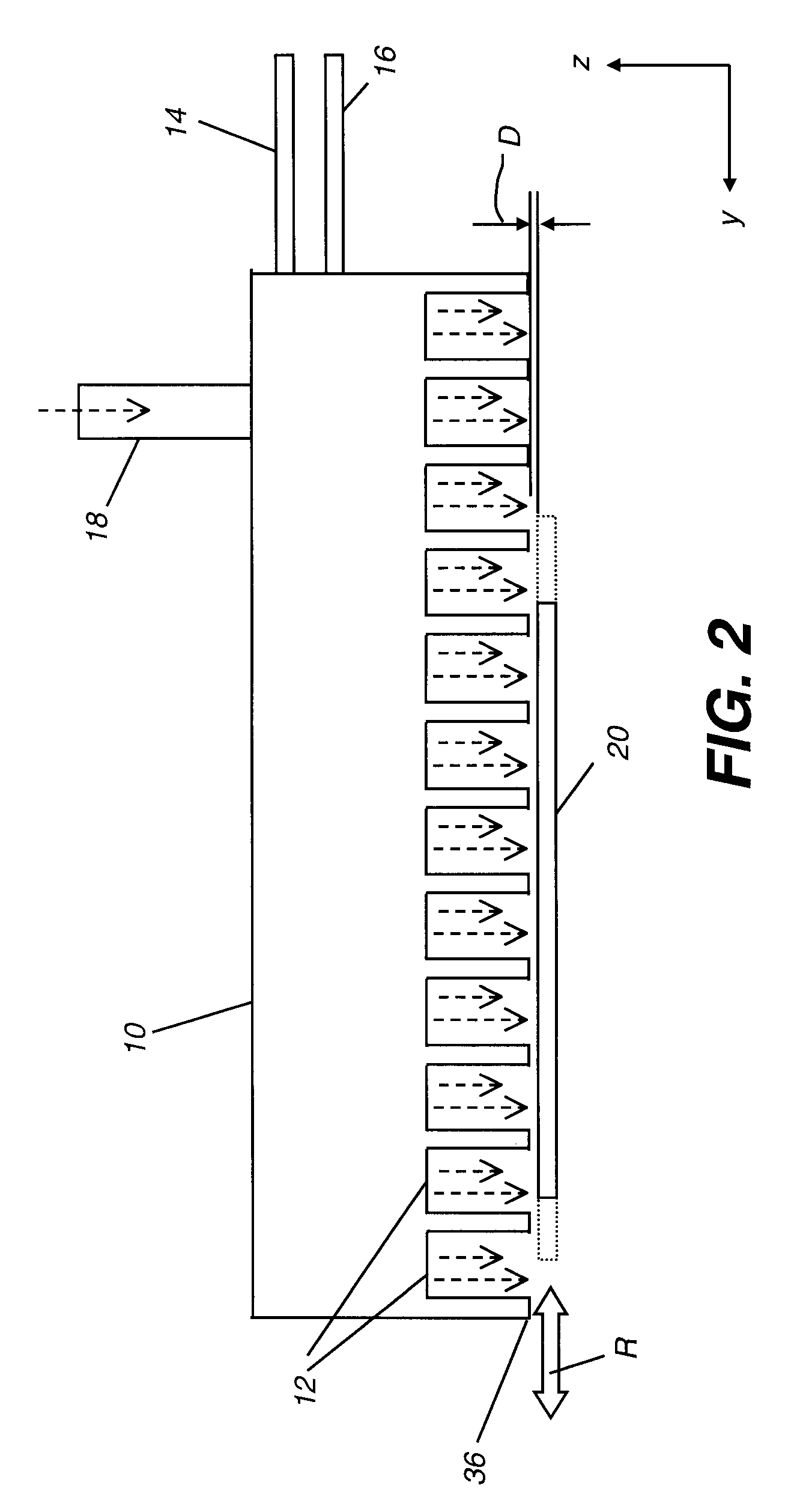Process for atomic layer deposition
a technology of atomic layer and deposition method, which is applied in the direction of chemical vapor deposition coating, coating, additive manufacturing apparatus, etc., can solve the problems of poor subthreshold slope and high current, and achieve excellent field-effect electron mobilities and sufficient performance properties
- Summary
- Abstract
- Description
- Claims
- Application Information
AI Technical Summary
Benefits of technology
Problems solved by technology
Method used
Image
Examples
example 2
Preparation of Nitrogen-Doped ZnO Semiconductor Layer Using Atmospheric Pressure ALD Process
[0222]The preparation of the nitrogen-doped ZnO layer in this example is identical to that in Example 1 except that the pure water in the bubbler in that example is replaced by a solution of ammonia in water, at the concentration specified in Table 1 below.
TABLE 1N2 withN2Ammonia / MetalwithN2 InertSampleLayerMe3Al*Et2Zn*WaterWater**Air*AlkylAirPurgeCyclesAAl2O380804.8620110015003001ZnO 200 Å06804.8620110015001602N-Doped06084.862011001500160ZnO 200 Å*Flow values in sccm (standard cubic centimeters / min)**15% NH3 by weight in water
[0223]Aluminum source and drain contacts were evaporated on the resulting multilayer device through a shadow mask, yielding thin film transistors with a channel length of 50, 100 or 150 μm and a channel width of 500 μm. A photolithographic process was used to isolate devices on the substrate, producing islands of ZnO. Electrical test results for the above devices are sh...
example 3
[0224]This example describes the preparation of devices made using a range of NH3 concentrations in water. This experiment is similar to that described in example 1 except that the concentration of ammonia in the water bubbler solution was varied from 0 to 29 weight percent. The ammonia concentration used varied as in Table 3.
TABLE 3Ammonia ConcentrationSampleweight % in water3A03B0.733C3.63D29
TABLE 4AverageSubthresholdAverageSampleMobilitySlopeIon / Ioff3A5.433.141.9 × 1063B6.471.358.1 × 1073C7.421.415.3 × 1073D4.171.032.3 × 108
[0225]The data in Table 4 above show that the higher levels of ammonia during the ZnO deposition have a substantial improvement in on / off ratio. The experiment also showed that the higher levels of ammonia during the ZnO deposition have a substantial improvement in subthreshold slope and mobility as the concentration of ammonia was increased up to a point and then it appeared to drop (for mobility only) at the highest ammonia concentration.
example 4
[0226]The purpose of this example is to demonstrate that by using N-doping in ZnO layers that it is possible to prepare TFTs that have a broad range of useful electrical properties. The samples were prepared in a fashion identical to that in Example 2, Sample 2 except that the number of cycles that the coating head made (hence the thickness of the ZnO layer) was varied from 50 to 200 (63 to 250 Angstroms thick. All samples in this example were prepared with 14.5 weight % ammonia in the water bubbler), see Table 5 below.
TABLE 5ZnO LayerMobilitySampleCyclesThickness, Åcm2 / V * sIon / Ioff4A50635.051.0 × 1084B801004.574.6 × 1074C12515611.85.8 × 1084D16020015.53.6 × 1084E20025012.71.3 × 109
PUM
| Property | Measurement | Unit |
|---|---|---|
| Temperature | aaaaa | aaaaa |
| Temperature | aaaaa | aaaaa |
| Temperature | aaaaa | aaaaa |
Abstract
Description
Claims
Application Information
 Login to View More
Login to View More - R&D
- Intellectual Property
- Life Sciences
- Materials
- Tech Scout
- Unparalleled Data Quality
- Higher Quality Content
- 60% Fewer Hallucinations
Browse by: Latest US Patents, China's latest patents, Technical Efficacy Thesaurus, Application Domain, Technology Topic, Popular Technical Reports.
© 2025 PatSnap. All rights reserved.Legal|Privacy policy|Modern Slavery Act Transparency Statement|Sitemap|About US| Contact US: help@patsnap.com



